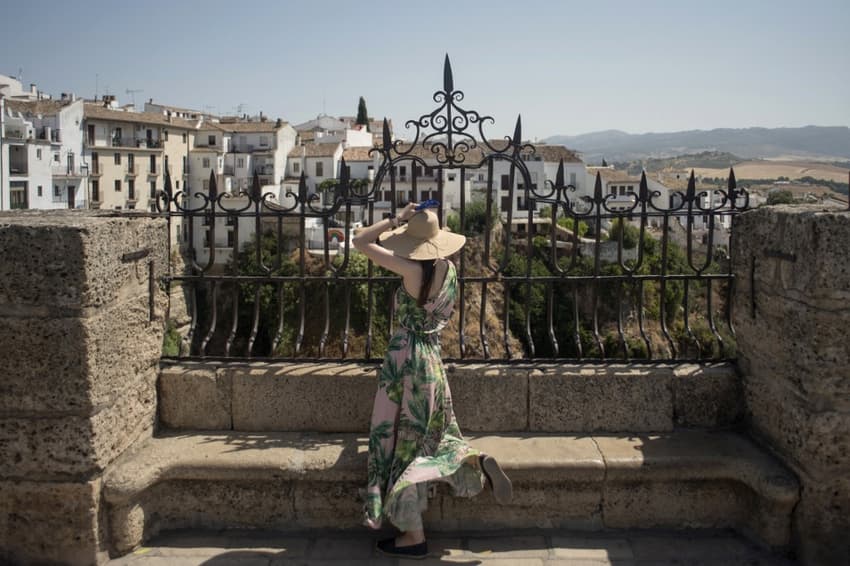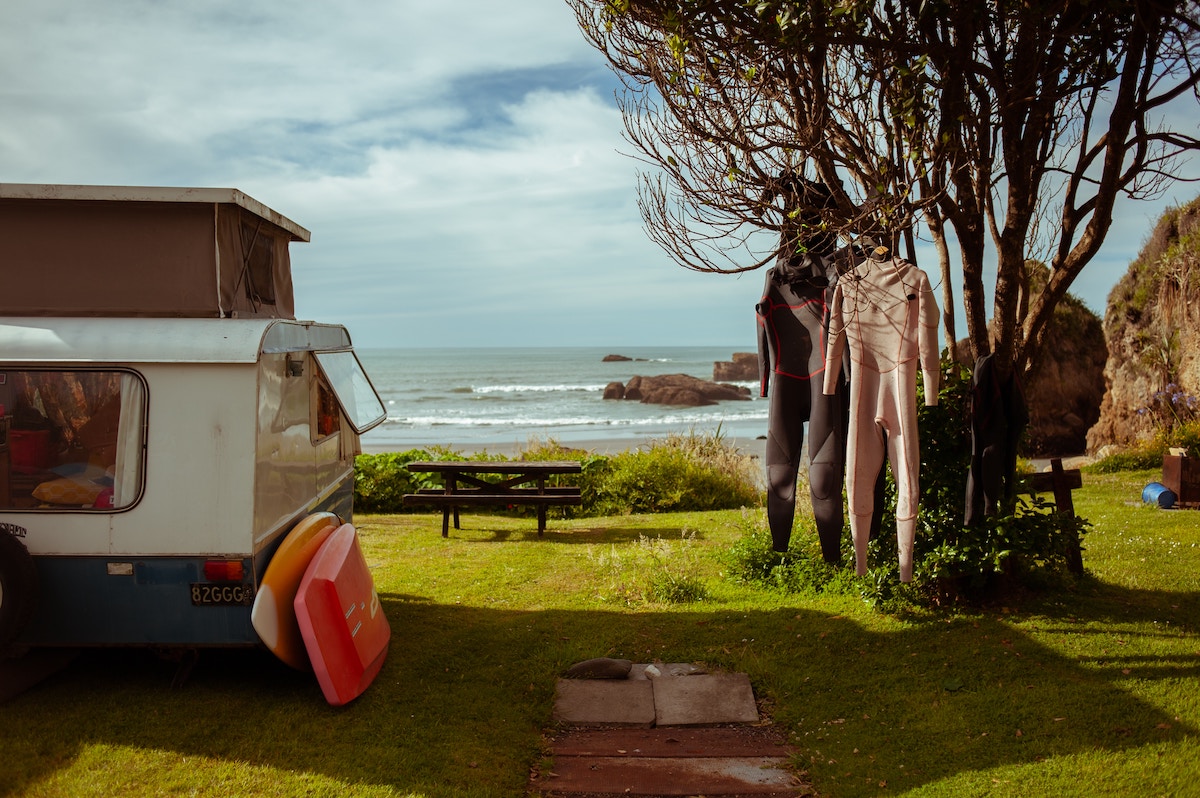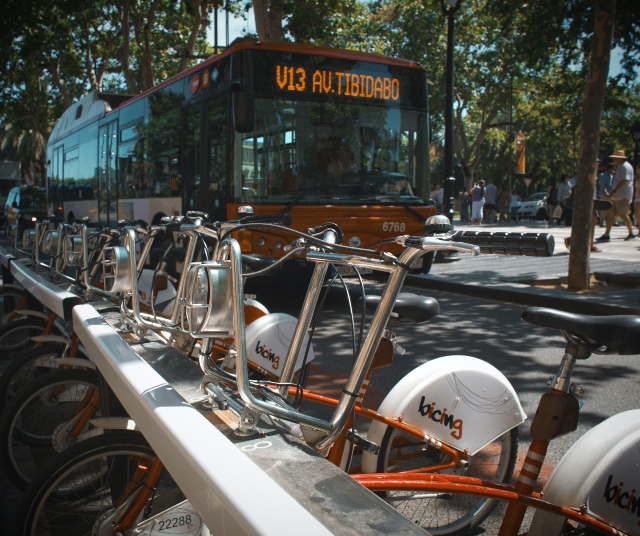Ten ways to save money on your trip to Spain this summer

Heading to Spain this summer but worried about breaking the bank? Here are ten detailed tips that will help you cut costs despite rising inflation and it being peak holiday season.
Over the last year, inflation has gone through the roof in many countries, and Spain is no different. While Spain is usually considered to be one of Western Europe's cheaper countries, holidaymakers this year may be shocked at how much prices have risen.
Spanish hotels have been increasing their prices for the last two years since people started travelling again after the pandemic, but this year hotel costs have skyrocketed.
Hotel establishments raised their prices by 11 percent in March 2023 compared to the same month in 2022, which already had already seen an increase of almost 35 percent, according to the latest data from Spain's National Statistics Institute (INE).
READ ALSO: Where in Spain have hotel prices risen the most?
So is there anything that can be done to enjoy a relatively well-priced holiday in Spain? The answer is while you'll definitely find your Spanish break to be more expensive this summer, there's still plenty you can do to save money.
1) Book early
Last-minute package deals aside, waiting to book flights and accommodation nearer to the date is likely to cost more.
It pays to start your research as soon as possible and lock in a price while there’s still reasonable availability. When spots get filled, demand is driven up and you will get charged a premium instead.
Summer is the time when most Spaniards go on holiday too, so this drives prices up even more. Experts are predicting a huge tourist boom in Spain this summer, possibly even more than in 2019 before the pandemic.
Spain's Minister of Industry, Commerce and Tourism, Héctor Gómez also predicts that Spain will receive between 52.3 and 54.8 million foreign tourists during the summer months from May to October 2023.
2) Get tickets for attractions in advance
Spain’s most famous attractions such as Granada’s Alhambra Palace, Barcelona’s La Sagrada Familia and Seville’s Real Alcázar can book out weeks in advance, so it’s important to book ahead.
If you’re flexible on days and times, you may also be able to get some discounts on these pricey attractions, which are sometimes mentioned on the official websites. For example, a tour of a particular area of these attractions or a nighttime visit could prove cheaper.
Check out the local tourist office too as they sometimes offer deals and tickets, taking in several of the city’s attractions at once. Barcelona’s Articket BCN for example can save you up to 45 percent on visiting the city’s most famous art museums.
3) Look for alternative accommodation
There are more places to stay other than hotels, B&Bs or rentals on Airbnb. While it’s worth doing an initial search on these types of accommodation, you may be able to save money by staying in a casa rual (rural property), or a campsite. Most campsites in Spain have plenty of facilities such as swimming pools, restaurants and entertainment – some are even located very close to the beachfront.
READ ALSO:
If your dates are flexible you could even try looking on platforms such as Trusted House Sitters or Mind My House where you can stay in a property for free in exchange for looking after the owners' pets. Keep in mind you may need to pay a small fee to join these sites and you can only go when the owner is going on holiday, so you can’t have specific dates in mind.
If you live in a desirable location, you could even try house swapping, so that you wouldn't be paying anything for accommodation at all.

Camping can be one of the ways to slash costs in Spain, especially if you already own your own caravan or motorhome. Photo: Delphine Ducaruge / Unsplash
4) Use a different booking platform
There is an abundance of choices on the market when it comes to getting good accommodation prices. The popular accommodation booking site Booking.com might be your go-to due to its wide range of options, but check out its competitors such as Snap Travel, which can offer huge discounts and also has free cancellation options, or Staypia, billed as one of the world's cheapest hotel reservation sites.
If you like the feeling of living like a local in an Airbnb or want a self-catering option, check out Plum Guide which offers the best privately rented apartments and picks the cream of the crop from all the hundreds of Airbnb listings. An alternative to Airbnb, but often a better value platform, is Vrbo, which has a broad range of rental options suitable for lower budgets.
Often you’ll find the prices are cheaper on an accommodation’s own website too, because platforms may charge them a fee.
Budget airline sites aside, when it comes to flights, you can find trip deals across most airlines on Skyscanner. It has an alert function too, which will send you the latest price drops.
5) Travel by public transport and look out for travel cards
Public transport is very affordable in Spain, it’s much easier and cheaper to get around than renting your own car or getting taxis in city centres.
The national rail company Renfe is the best place to look for train tickets. Look out for the special offers they sometimes have between regions. Low-cost high-speed rail operators Ouigo, Avlo and Iryo also offer great deals between some of Spain's biggest cities.
Spain is also offering free train tickets throughout 2023 on Cercanías, Rodalies (Catalonia), and Media Distance (local and medium-distance) trains. You can get them at local train stations and must pay a deposit of either €10 or €20, which will be returned to you if you make 16 journeys within a three-month period. While tourists are unlikely to make this many trips, you may find that if you just make a few of them, paying the deposit may be cheaper than buying train tickets each time.
READ ALSO - GUIDE: How to get free train tickets in Spain in 2023
In Spain’s main cities, look out for travel cards to be used on the local busses and metro system, which can save you money, if you plan on using them a lot. In Madrid, you can get tourist cards to be used on the metro system, allowing unlimited travel from one to seven days. While in Barcelona, you can buy the Hola Travel Card, valid for two to five days and also allows unlimited travel.
Most of Spain’s other big cities such as Valencia and Seville are very easily explored on foot, so even though they have metro and tram systems, it’s unlikely that you’ll need to use them very much and you can save money on transport.

Take the local bus rather than the tourist one is the general rule if you want to keep costs down in Spain. Photo: M.R./Unsplash
6) Use ride shares
If you want an alternative to train travel, but don’t want to hire your own car, you could try carpooling or ride-sharing. By sharing expenses with others, it’s estimated that you can save up to 75 percent of the price of just going alone.
Spain has several ride-sharing apps and websites you can choose from. BlaBla Car is one of the most well-known and most popular carpooling apps in Spain. Others such as Compartir Coche and AmiCoche are also great choices. Not only will you be able to save money, but you may also make new local friends this way too.
READ ALSO - How to cut travel costs by carpooling in Spain: Eight trustworthy options
7) Avoid August if you can
August is the peak holiday month in Spain when many businesses shut down and most Spaniards leave the cities and head for the coasts or the mountains.
Because of the sheer amount of locals travelling at this time, as well as international tourists, accommodation prices rise to their highest.
Even changing your dates to the beginning or middle of July can work out a lot cheaper. You’ll also find there are a lot more options available during the rest of the summer, as Spaniards book their favourite properties out almost a year in advance.
8) Search out Spain’s festivals
Spain boasts some of the most amazing cultural festivals in Europe, providing some excellent free entertainment while you’re on your holiday.
The main ones in summer include San Juan, celebrated with firework displays and bonfires all over the country; the Moors and the Christians mock battles in the Alicante region; La Tomatina tomato fight in the Valencia region; and the Wine Battle in La Rioja.
Our top money-saving tip is to stay just outside of the main towns where the festivals are being held and travel in each day, this will help you avoid the inflated accommodation prices.

Don't expect to find well-priced accommodation in Pamplona during the San Fermín bull run festival, if at all. Photo: San Fermin/Unsplash
9) Avoid the restaurants on the seafront or near major attractions
All the locals in Spain know that the nearer a restaurant is to the sea, the higher the bill at the end of your meal. Of course, sea views are nice, but the higher price tag doesn’t necessarily mean better quality food either.
On Barcelona’s beachfront for example, you’ll easily pay €5-10 more for a meal, than if you head inland a few streets.
Also, remember that you’ll pay a premium for restaurants and cafes in famous locations. Even a drink will cost you way above the average on Barcelona’s La Rambla or in Madrid’s Plaza Mayor.
Keep in mind that tapas isn’t a cheap meal, with each dish costing between €4 and €10 or even more, it can easily add up and may not even fill you up either. If you want to save money, the best option is to go international – pizza slices, filled baked potatoes and noodles in Spain’s big cities are a lot cheaper than most Spanish food.
10) Speak some Spanish
You’re not expected to be fluent in Spanish when you go on holiday here, but knowing some basics certainly goes a long way with the locals – and can end up actually saving you money.
Tourist traps notoriously hike up the prices for guiris (foreign tourists), so if you don’t want to get overcharged at the local bar, ask for it in Spanish instead. You also need to know what to order, for example, ask for a cappuccino or an iced-coffee instead of a café con leche (coffee with milk) or a café con hielo (coffee with ice) and you could end up paying €2-3 more for your drink.
Comments
See Also
Over the last year, inflation has gone through the roof in many countries, and Spain is no different. While Spain is usually considered to be one of Western Europe's cheaper countries, holidaymakers this year may be shocked at how much prices have risen.
Spanish hotels have been increasing their prices for the last two years since people started travelling again after the pandemic, but this year hotel costs have skyrocketed.
Hotel establishments raised their prices by 11 percent in March 2023 compared to the same month in 2022, which already had already seen an increase of almost 35 percent, according to the latest data from Spain's National Statistics Institute (INE).
READ ALSO: Where in Spain have hotel prices risen the most?
So is there anything that can be done to enjoy a relatively well-priced holiday in Spain? The answer is while you'll definitely find your Spanish break to be more expensive this summer, there's still plenty you can do to save money.
1) Book early
Last-minute package deals aside, waiting to book flights and accommodation nearer to the date is likely to cost more.
It pays to start your research as soon as possible and lock in a price while there’s still reasonable availability. When spots get filled, demand is driven up and you will get charged a premium instead.
Summer is the time when most Spaniards go on holiday too, so this drives prices up even more. Experts are predicting a huge tourist boom in Spain this summer, possibly even more than in 2019 before the pandemic.
Spain's Minister of Industry, Commerce and Tourism, Héctor Gómez also predicts that Spain will receive between 52.3 and 54.8 million foreign tourists during the summer months from May to October 2023.
2) Get tickets for attractions in advance
Spain’s most famous attractions such as Granada’s Alhambra Palace, Barcelona’s La Sagrada Familia and Seville’s Real Alcázar can book out weeks in advance, so it’s important to book ahead.
If you’re flexible on days and times, you may also be able to get some discounts on these pricey attractions, which are sometimes mentioned on the official websites. For example, a tour of a particular area of these attractions or a nighttime visit could prove cheaper.
Check out the local tourist office too as they sometimes offer deals and tickets, taking in several of the city’s attractions at once. Barcelona’s Articket BCN for example can save you up to 45 percent on visiting the city’s most famous art museums.
3) Look for alternative accommodation
There are more places to stay other than hotels, B&Bs or rentals on Airbnb. While it’s worth doing an initial search on these types of accommodation, you may be able to save money by staying in a casa rual (rural property), or a campsite. Most campsites in Spain have plenty of facilities such as swimming pools, restaurants and entertainment – some are even located very close to the beachfront.
READ ALSO:
If your dates are flexible you could even try looking on platforms such as Trusted House Sitters or Mind My House where you can stay in a property for free in exchange for looking after the owners' pets. Keep in mind you may need to pay a small fee to join these sites and you can only go when the owner is going on holiday, so you can’t have specific dates in mind.
If you live in a desirable location, you could even try house swapping, so that you wouldn't be paying anything for accommodation at all.

4) Use a different booking platform
There is an abundance of choices on the market when it comes to getting good accommodation prices. The popular accommodation booking site Booking.com might be your go-to due to its wide range of options, but check out its competitors such as Snap Travel, which can offer huge discounts and also has free cancellation options, or Staypia, billed as one of the world's cheapest hotel reservation sites.
If you like the feeling of living like a local in an Airbnb or want a self-catering option, check out Plum Guide which offers the best privately rented apartments and picks the cream of the crop from all the hundreds of Airbnb listings. An alternative to Airbnb, but often a better value platform, is Vrbo, which has a broad range of rental options suitable for lower budgets.
Often you’ll find the prices are cheaper on an accommodation’s own website too, because platforms may charge them a fee.
Budget airline sites aside, when it comes to flights, you can find trip deals across most airlines on Skyscanner. It has an alert function too, which will send you the latest price drops.
5) Travel by public transport and look out for travel cards
Public transport is very affordable in Spain, it’s much easier and cheaper to get around than renting your own car or getting taxis in city centres.
The national rail company Renfe is the best place to look for train tickets. Look out for the special offers they sometimes have between regions. Low-cost high-speed rail operators Ouigo, Avlo and Iryo also offer great deals between some of Spain's biggest cities.
Spain is also offering free train tickets throughout 2023 on Cercanías, Rodalies (Catalonia), and Media Distance (local and medium-distance) trains. You can get them at local train stations and must pay a deposit of either €10 or €20, which will be returned to you if you make 16 journeys within a three-month period. While tourists are unlikely to make this many trips, you may find that if you just make a few of them, paying the deposit may be cheaper than buying train tickets each time.
READ ALSO - GUIDE: How to get free train tickets in Spain in 2023
In Spain’s main cities, look out for travel cards to be used on the local busses and metro system, which can save you money, if you plan on using them a lot. In Madrid, you can get tourist cards to be used on the metro system, allowing unlimited travel from one to seven days. While in Barcelona, you can buy the Hola Travel Card, valid for two to five days and also allows unlimited travel.
Most of Spain’s other big cities such as Valencia and Seville are very easily explored on foot, so even though they have metro and tram systems, it’s unlikely that you’ll need to use them very much and you can save money on transport.

6) Use ride shares
If you want an alternative to train travel, but don’t want to hire your own car, you could try carpooling or ride-sharing. By sharing expenses with others, it’s estimated that you can save up to 75 percent of the price of just going alone.
Spain has several ride-sharing apps and websites you can choose from. BlaBla Car is one of the most well-known and most popular carpooling apps in Spain. Others such as Compartir Coche and AmiCoche are also great choices. Not only will you be able to save money, but you may also make new local friends this way too.
READ ALSO - How to cut travel costs by carpooling in Spain: Eight trustworthy options
7) Avoid August if you can
August is the peak holiday month in Spain when many businesses shut down and most Spaniards leave the cities and head for the coasts or the mountains.
Because of the sheer amount of locals travelling at this time, as well as international tourists, accommodation prices rise to their highest.
Even changing your dates to the beginning or middle of July can work out a lot cheaper. You’ll also find there are a lot more options available during the rest of the summer, as Spaniards book their favourite properties out almost a year in advance.
8) Search out Spain’s festivals
Spain boasts some of the most amazing cultural festivals in Europe, providing some excellent free entertainment while you’re on your holiday.
The main ones in summer include San Juan, celebrated with firework displays and bonfires all over the country; the Moors and the Christians mock battles in the Alicante region; La Tomatina tomato fight in the Valencia region; and the Wine Battle in La Rioja.
Our top money-saving tip is to stay just outside of the main towns where the festivals are being held and travel in each day, this will help you avoid the inflated accommodation prices.

9) Avoid the restaurants on the seafront or near major attractions
All the locals in Spain know that the nearer a restaurant is to the sea, the higher the bill at the end of your meal. Of course, sea views are nice, but the higher price tag doesn’t necessarily mean better quality food either.
On Barcelona’s beachfront for example, you’ll easily pay €5-10 more for a meal, than if you head inland a few streets.
Also, remember that you’ll pay a premium for restaurants and cafes in famous locations. Even a drink will cost you way above the average on Barcelona’s La Rambla or in Madrid’s Plaza Mayor.
Keep in mind that tapas isn’t a cheap meal, with each dish costing between €4 and €10 or even more, it can easily add up and may not even fill you up either. If you want to save money, the best option is to go international – pizza slices, filled baked potatoes and noodles in Spain’s big cities are a lot cheaper than most Spanish food.
10) Speak some Spanish
You’re not expected to be fluent in Spanish when you go on holiday here, but knowing some basics certainly goes a long way with the locals – and can end up actually saving you money.
Tourist traps notoriously hike up the prices for guiris (foreign tourists), so if you don’t want to get overcharged at the local bar, ask for it in Spanish instead. You also need to know what to order, for example, ask for a cappuccino or an iced-coffee instead of a café con leche (coffee with milk) or a café con hielo (coffee with ice) and you could end up paying €2-3 more for your drink.
Join the conversation in our comments section below. Share your own views and experience and if you have a question or suggestion for our journalists then email us at [email protected].
Please keep comments civil, constructive and on topic – and make sure to read our terms of use before getting involved.
Please log in here to leave a comment.